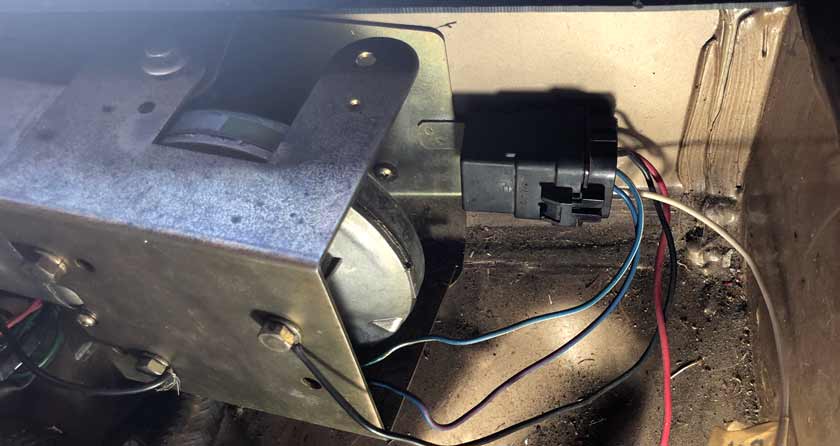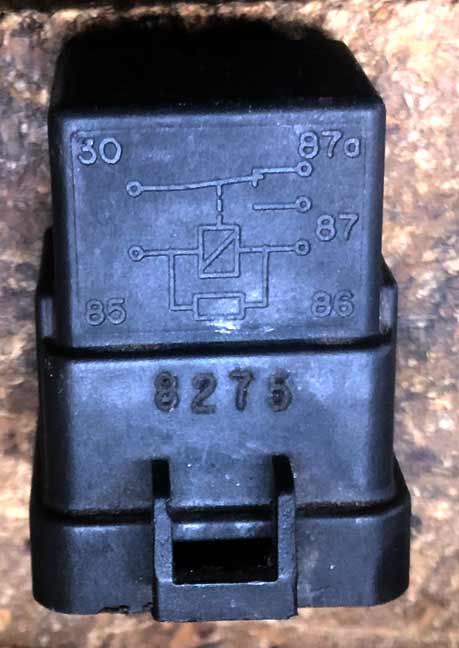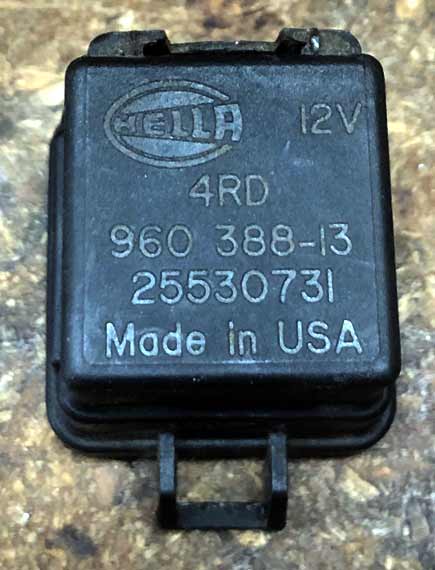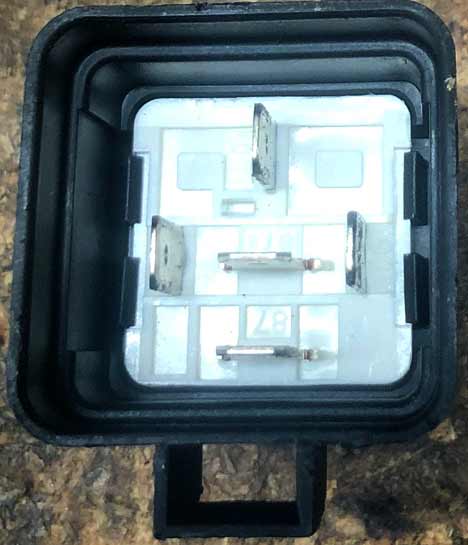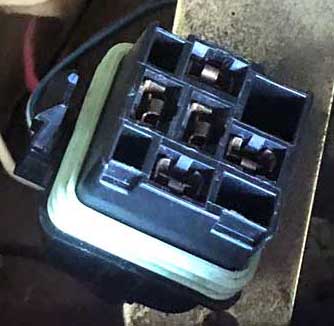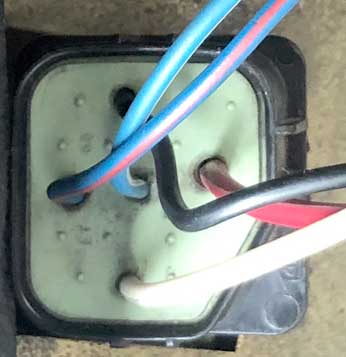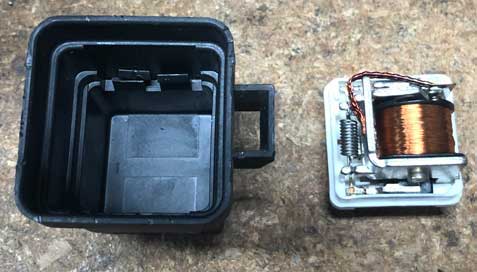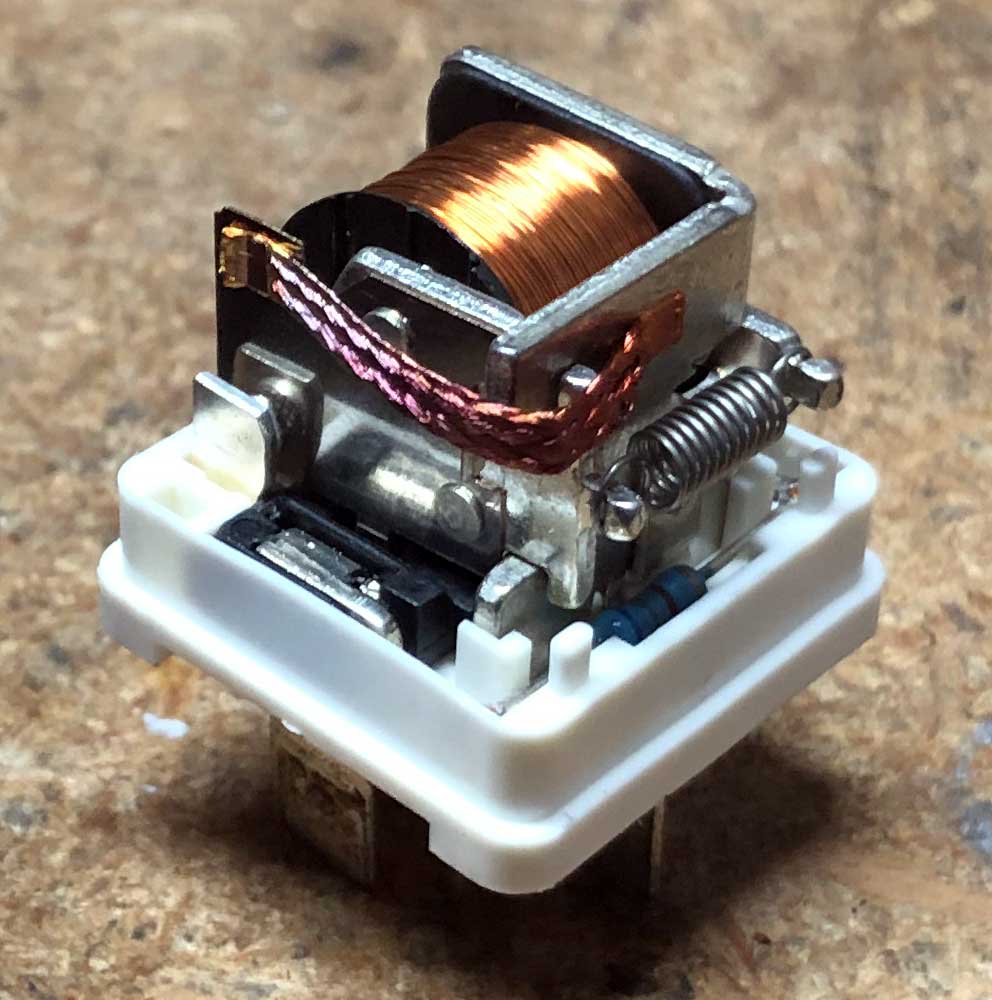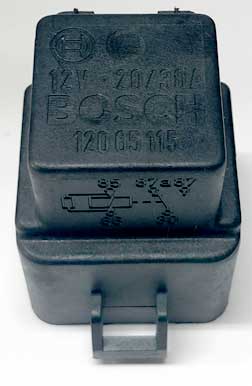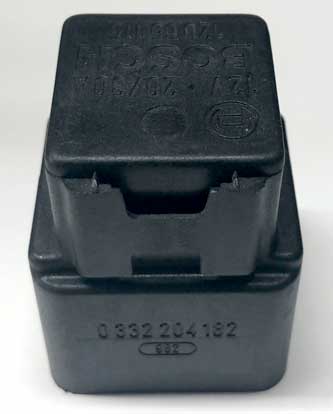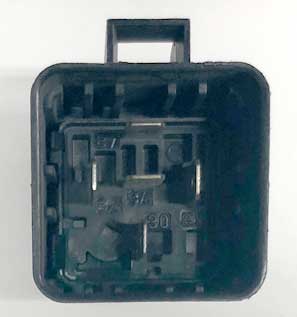Stuck Retractable Aerial
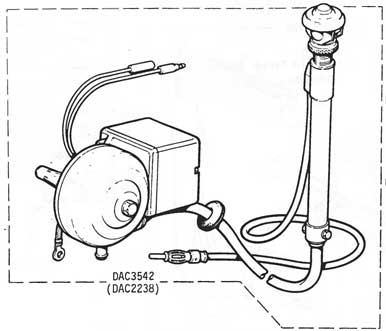 Jaguar calls it an aerial in their literature. I prefer the word antenna, as it's easier for me to spell properly. I've looked it up and it appears that the two words truly are interchangeable.
Jaguar calls it an aerial in their literature. I prefer the word antenna, as it's easier for me to spell properly. I've looked it up and it appears that the two words truly are interchangeable.
The Vanden Plas (and as far as I know, all models of this era) originally came with power retractable antennas. This was a nice feature, as permanent whip antennas (a fixed length rod) can be snapped off by automatic car wash machines and by vandals. Plus it just gives the car a cleaner line when it's retracted.The disadvantage to these is the same as anything that has a power motor to run it—they can and do fail. Sometimes they fail when they're retracted, but I think more often they fail when they're deployed. The only good thing to say about that is that least the radio still gets a good signal that way.
When I bought my car (well used), the original antenna had been replaced with an aftermarket version that worked on a different principle. That would have been fine but it broke, so when I replaced it I went ahead and reverted to an original Jaguar junkyard setup. That did well for me for the next 20 years, but now it's dead, too and I need to find out what gives.
The Jaguar factory manual only talks about how to replace the motor and the relay; there's nothing about fault diagnosis. It's also not covered in Jim Isbell's The Jaguar XJ6 from Bumper to Bumper e-book. So I'm going to have dig through forum posts and piece this together on my own. This is a common problem; I'm surprised someone hasn't done this before.
Background
Motorized antennas generally come in two styles. One has both mast and motor together as one unit. If there's room under the fender, this is the preferred one. It's the aftermarket one that came with my car, but there really wasn't enough room for it in the fender-well. The original Jaguar antenna was the second style, where the mast is located in the fender-well and the motor is located in the trunk next to the spare tire. This requires the flexible cable to that feeds the mast to be extra long and it snakes through a hole in the fender into the spare tire box. The antenna motor is located on the lefthand side as you look down it from the rear of the car. It's mounted on a large bracket that's bolted to the car body.
Electrical power comes in through wires that go through a relay which feeds 12V power to run the motor. The relay is located next to the motor, itself mounted onto the rear body panel of the tire-well. It's held on by a tongue-and-groove slide, so you just slide it sideways and it'll come out.
Diagnosis
I started by pulling the relay. This is a five-pin changeover relay. Jaguar part DAC1820. My particular one is a Hella 4RD 960 388-13.
I checked for voltage on the pins of the plug that the replay fits into. If you look on the back of the plug you'll see five wires. They are red, black, white, blue-with-red-stripe and blue-with-white stripe. Black is ground. Red is 12V power. Blue with stripes energize the motor up and down. White is the control from the radio.
Took a piece of generic 20 gauge electrical wire and put one side on the red power pin terminal of the plug and touched each of the blue wires separately. This fed power to the antenna motor. One (the center pin socket, 87a) made the antenna come down, the other (87) made it go up again. So! The antenna motor works and the antenna goes up and down freely. That's a relief. I wasn't looking forward to finding a new mast and motor and replacing it.
I pulled the replay and put it on my bench. I set my meter to test continuity, clipped the black probe on the 30 pin and touched the red probe onto the 87 pin. Beeep! That means I've got electrical flow. Touched 87a: nothing. Good.
I've got a variable DC power supply, so next I put 12V of DC across pins 85 and 86. I heard a click—that should be the switch moving from 87 to 87a. With the black meter probe still on 30, I touched 87: nothing. Good, that means the switch moved over. I touched 87a: nothing. That's no bueno.
I was able to prise the relay out from the cap. When I applied power, I could see the switch actuate, but still didn't get a closed circuit. On the XJ Lovers Faq, BJ Kroppe says that he opened it up, doused it electrical contact cleaner, let it dry and then spritzed it with compressed air, and that fixed it for him. Didn't work for me. Considering the price of a replacement relay, I didn't feel like seriously trying to figure out what was broken.I found a new one on eBay and ordered it instead.
Replacement
Here's the new relay; no box but supposedly new. It's a Bosch 120 65 115. I couldn't find it on the cross-reference lists but it's functionally the same, and the weatherproof cap is the same so it fits. The only thing that doesn't fit well is the slide part of the cap--it's too tight. As I type this, the sheet metal tongue on the car is just a shade too big. I'm going to put a little lube on it and see if I can persuade it on; if that doesn't work, I'll get a slim nail file and see if I can file the plastic cap and widen it enough to slip on.
Regardless of the mounting, I popped the relay on and hey hey, it worked! That was a big relief. Since the old relay lasted at least since I replaced the antenna in the late 90s, more likely since whenever the new antenna was fitted before that, figure it lasted at least 20 years. If I get another 20 years out of it, I'll be thrilled.
In the meantime I'm going to see if I can get another one the next time I go to the junk yard.
Related: 4x4Wire has a good forum thread that explains how power antennas work.

